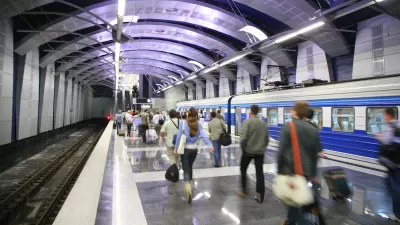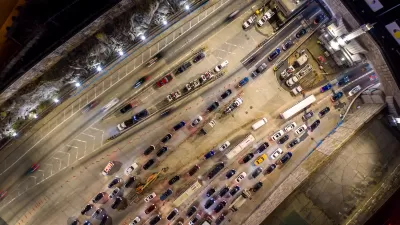As people re-evaluate their transportation decisions, the argument to support transportation demand management might not be what policy makers expected.

The Mobility Lab team wants transportation demand management (TDM) professionals to potentially reexamine the organizational goals and definitions of their work.
A post by Paul Mackie of Mobility Lab asks the question: "Would a common definition of the term and practice of transportation demand management help the industry find other funding sources, do better lobbying for policies, and gain wider acceptance and popularity?"
Mackie builds on the arguments from a presentation by Kirk Hovenkotter, a program analyst at TransitCenter and Mobility Lab contributor. According to Hovenkotter's argument, as described by Mackie, one of the primary sources of federal funding for TDM programs leads practitioners astray by focusing on ideas that don't reflect the preferences of users.
More specifically: "With 59 percent of funding for regional TDM programs throughout the country coming from the federal Congestion Mitigation and Air Quality (CMAQ) program, Hovenkotter said TDM organizations are somewhat forced to tailor their work to goals that are not Americans’ top priorities." The targets of the CMAQ program are in its name: traffic congestion and air quality.
Among the findings presented by Hovenkotter: "The top motivations for people [on their urban mobility choices] weren’t traffic congestion or environmental impact, but access to affordable, reliable, efficient transportation options."
The state of Oregon is the first to move away from relying on the TDM term in describing the benefits of such systems. Its statewide plan refers to its "transportation options" rather than transportation demand management.
FULL STORY: Rebranding “TDM” Could Fix the Industry’s Communications Struggle

Alabama: Trump Terminates Settlements for Black Communities Harmed By Raw Sewage
Trump deemed the landmark civil rights agreement “illegal DEI and environmental justice policy.”

Planetizen Federal Action Tracker
A weekly monitor of how Trump’s orders and actions are impacting planners and planning in America.

The 120 Year Old Tiny Home Villages That Sheltered San Francisco’s Earthquake Refugees
More than a century ago, San Francisco mobilized to house thousands of residents displaced by the 1906 earthquake. Could their strategy offer a model for the present?

BLM To Rescind Public Lands Rule
The change will downgrade conservation, once again putting federal land at risk for mining and other extractive uses.

Indy Neighborhood Group Builds Temporary Multi-Use Path
Community members, aided in part by funding from the city, repurposed a vehicle lane to create a protected bike and pedestrian path for the summer season.

Congestion Pricing Drops Holland Tunnel Delays by 65 Percent
New York City’s contentious tolling program has yielded improved traffic and roughly $100 million in revenue for the MTA.
Urban Design for Planners 1: Software Tools
This six-course series explores essential urban design concepts using open source software and equips planners with the tools they need to participate fully in the urban design process.
Planning for Universal Design
Learn the tools for implementing Universal Design in planning regulations.
Clanton & Associates, Inc.
Jessamine County Fiscal Court
Institute for Housing and Urban Development Studies (IHS)
City of Grandview
Harvard GSD Executive Education
Toledo-Lucas County Plan Commissions
Salt Lake City
NYU Wagner Graduate School of Public Service





























